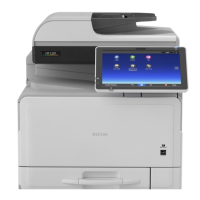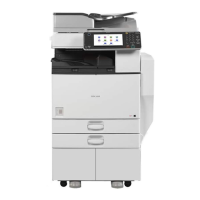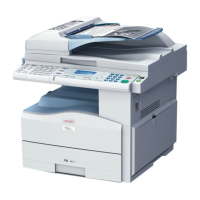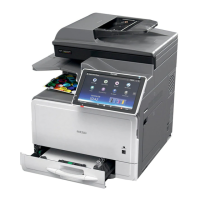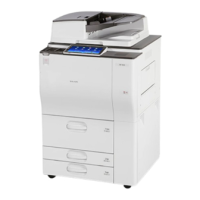16. Click [Certificate 2] on “Certification”, and then click [OK].
17. Click [Logout].
18. Quit Web Image Monitor.
• you request two certificates simultaneously, the certificate authority might not display either certificate.
Click [Cancel Request] to cancel the request.
• You can select [Certificate 1] and [Certificate 2] in the “Device Certificate” window. Note that if you
select [Certificate 1] in the “Device Certificate” window, you must select “Certificate 1” in the “IEEE
802.11a/b/g” drop down menu in the “Certification” window.
• Click [Cancel Request] to cancel the request for the server certificate.
• If “Not found” appears after clicking [OK] in steps 8 and 16, wait one or two minutes, and then click
[Refresh].
Setting Items of WPA/WPA2
1. Log on to Web Image Monitor in the administrator mode.
2. Click [Configuration], and then click [Wireless LAN Settings] in the “Interface” area.
3. Select [Infrastructure Mode] in “Communication Mode”.
4. Enter the alphanumeric characters (a-z, A-Z, or 0-9) in [SSID] according to the access point
you want to use.
5. Select [WPA] in “Security Method”.
6. Select [TKIP] or [CCMP (AES)] in “WPA Encryption Method” according to the access point
you want to use.
7. Select [WPA] or [WPA2] in “WPA Authentication Method”.
8. In “User Name”, enter the user name set in the RADIUS server.
9. Enter the domain name in “Domain Name”.
10. Select “EAP Type”. Configurations differ according to the EAP Type.
EAP-TLS
• Make the following settings according to the operating system you are using:
• Select [On] or [Off] in “Authenticate Server Certificate”.
• Select [On] or [Off] in “Trust Intermediate Certificate Authority”.
• Enter the host name of the RADIUS server on “Server ID”.
LEAP
• Click [Change] in “Password”, and then enter the password set in the RADIUS server.
EAP-TTLS
4. Appendix
154

